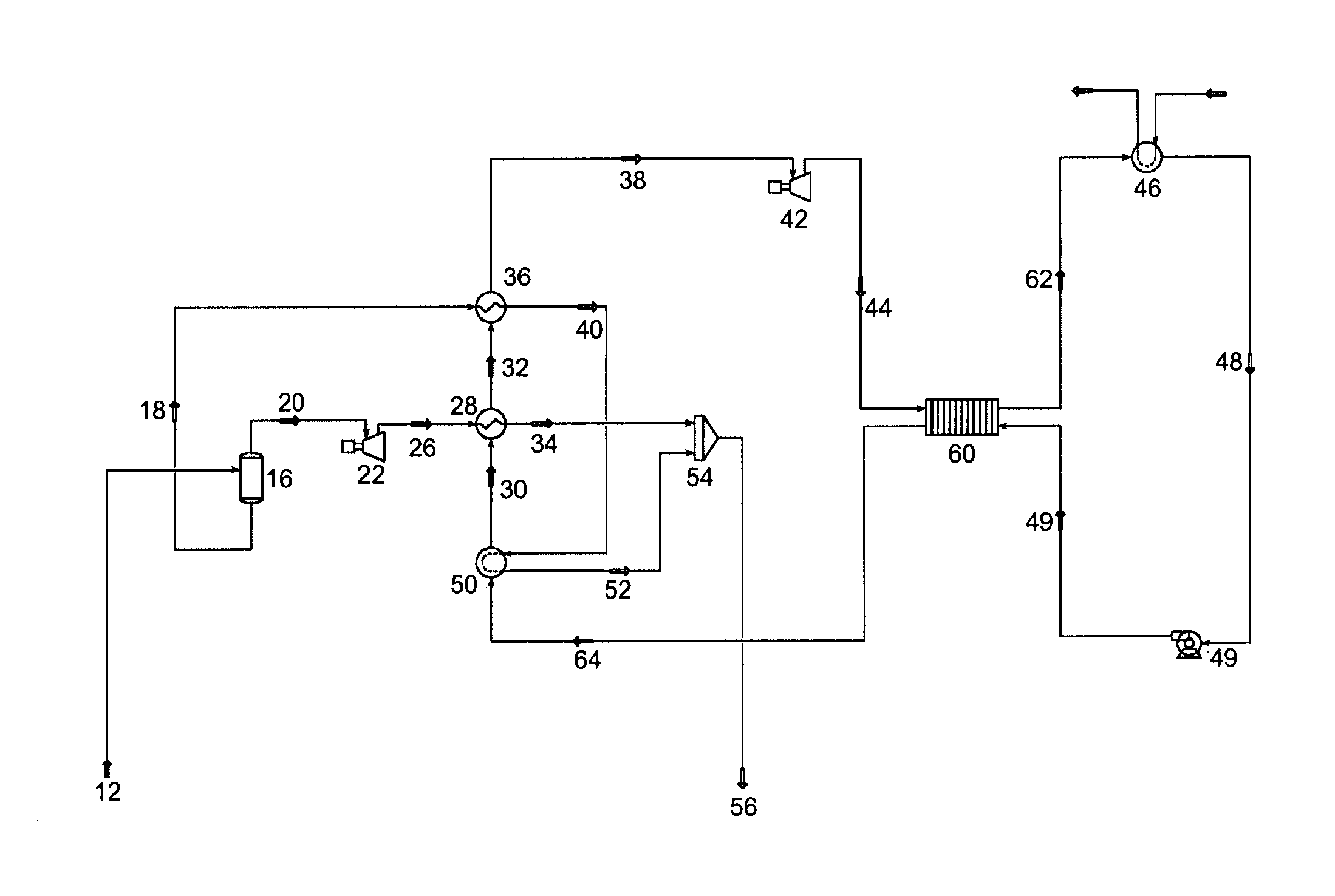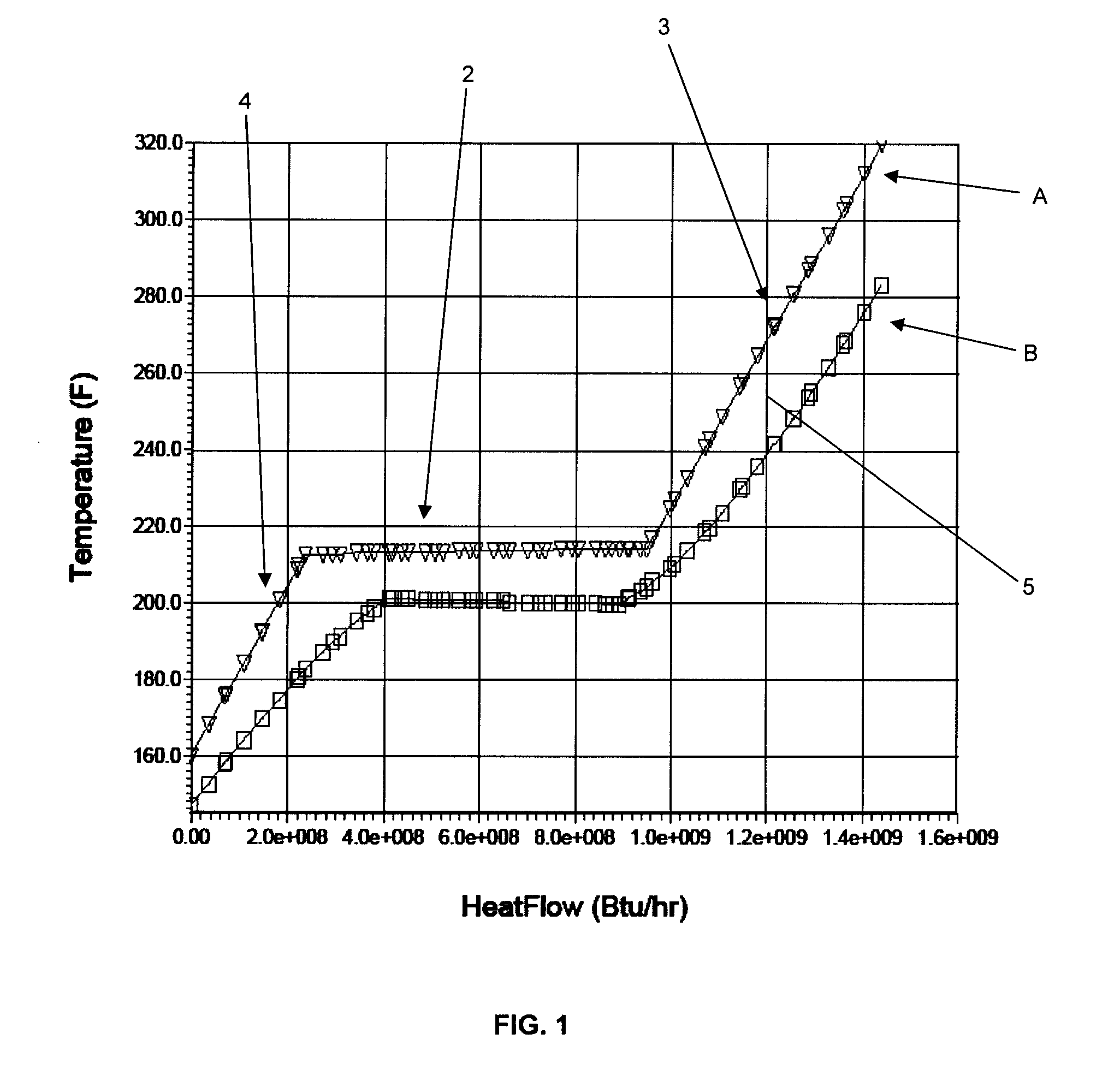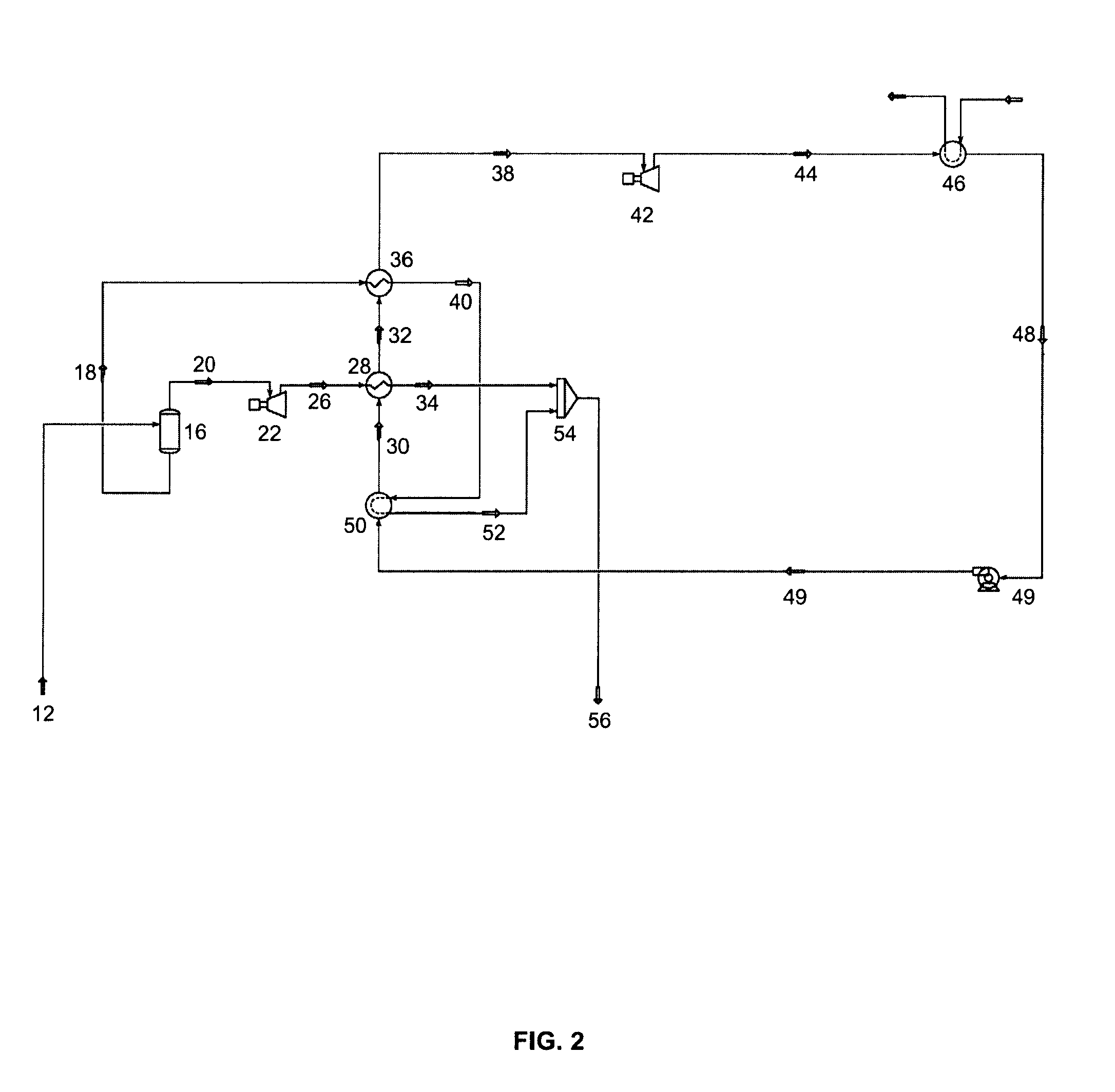Geothermal power plant utilizing hot geothermal fluid in a cascade heat recovery apparatus
a geothermal power plant and cascade heat recovery technology, applied in steam engine plants, geothermal energy generation, machines/engines, etc., can solve the problems of limited use, inefficient in some applications, and not fully utilizing brine heat, so as to maximize heat extraction from brine and less optimized system
- Summary
- Abstract
- Description
- Claims
- Application Information
AI Technical Summary
Benefits of technology
Problems solved by technology
Method used
Image
Examples
Embodiment Construction
[0010]According to Carnot Cycle theory, whenever there is a heat Q transferred from the hot temperature Th reservoir to cold temperature Tc reservoir, the Exergy E, the available energy that can be converted into power rather than heat, is defined by the following formula:
E=Q×(1-TcTh)Equation1
[0011]If the cold reservoir is at atmosphere temperature T0, the hot reservoir temperature is T1, and Exergy is E1, then the formula becomes:
E1=Q×(1-T0T1)Equation2
[0012]Similarly, when heat Q is transferred from T2 (lower than T1) to T0 then,
E2=Q×(1-T0T2)Equation3
[0013]Then during the heat transfer process from T1 to T2, an Exergy loss occurs.
Eloss=E1-E2=Q×(1-T0T1)-Q×(1-T0T2)=Q×T0×T1-T2T1×T2Equation4
[0014]Based on the foregoing, it is clear that exergy loss is proportional to the temperature difference between the two heat transfer fluids. This suggests it is preferable to design a process where the heat exchanger system employs a tight approach throughout the temperature range to minimize the ...
PUM
 Login to View More
Login to View More Abstract
Description
Claims
Application Information
 Login to View More
Login to View More - R&D
- Intellectual Property
- Life Sciences
- Materials
- Tech Scout
- Unparalleled Data Quality
- Higher Quality Content
- 60% Fewer Hallucinations
Browse by: Latest US Patents, China's latest patents, Technical Efficacy Thesaurus, Application Domain, Technology Topic, Popular Technical Reports.
© 2025 PatSnap. All rights reserved.Legal|Privacy policy|Modern Slavery Act Transparency Statement|Sitemap|About US| Contact US: help@patsnap.com



